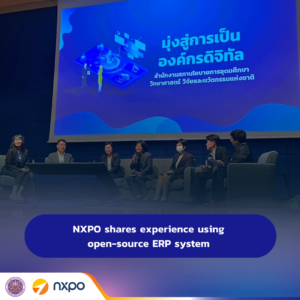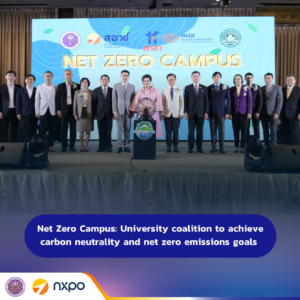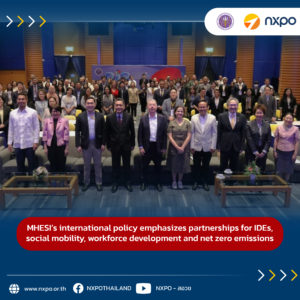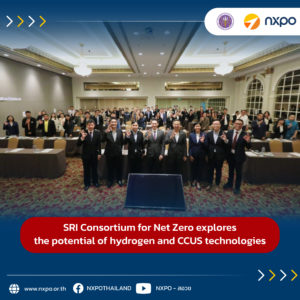NXPO and the Thai Sustainable Consumption and Production Network (Thai SCP Network) recently launched the CE Innovation Policy Forum as a platform for players in the society and industry to share viewpoint and drive circular economy (CE) transformation, while at the same time, information obtained from the forum will be analyzed and used in the CE policy design. The first forum saw representatives from key players, each sharing information and initiatives on CE with an audience of 160.

NXPO President Dr. Kitipong Promwong gave a presentation on Thailand’s CE model. CE is one of the components of Bio-Circular-Green (BCG) Economy which has recently been declared a national agenda for sustainable development. He gave examples of CE actions in businesses: 1) resource reduction with refill stations where customers bring their own containers to refill products, 2) value maximization of resources by setting up a refurbishing department to refurbish preowned merchandises and sell to customers, and 3) minimization of environmental impact by collecting and recycling packaging. Dr. Kitipong pointed out that Thailand needs to make improvement on resource-use efficiency. It is estimated that CE value will reach USD 10 trillion and that CE will account for 395 million jobs worldwide. To share this lucrative pie, Thai industry will need to adopt CE transformation to comply with CE standards introduced by various climate actions such as the European Green Deal. Thailand’s CE model takes on two approaches, one is to minimize/eliminate waste and the other is to develop a new business opportunity to create green job and low carbon society. Thailand’s CE model aims to reduce resource use by 1/4, cut down greenhouse gas emissions by 10 mtCO2e and make a 1-3% contribution to the GDP with the programs such as waste symbiosis, reverse logistic & recycle, circular food waste and CE Platform for Green Construction & Smart City. To develop new business opportunity, programs such as CE Solution Platform, CE Service Provider and CE Entrepreneurs will be introduced. NXPO and Thai SCP Network recently launched a Circular Design & CE Innovation Hub project, aiming to develop capacity of at least 100 Thai enterprises in circular design.

Thai SCP Network President Dr. Wijarn Simachaya underscored the economic and environmental benefit of CE. CE possesses great potential to improve resource-use efficiency and hence more profit, introduce new businesses and new economy, and create more jobs. Examples of new businesses include high-value waste recycling, bioenergy, sharing platform business model, remanufacturing and cleantech. By maximizing the value of limited resources, less waste is created, and is therefore better for the environment. The success of CE depends on the following key factors: 1) start with selected key projects and focused sectors, then scale-up, 2) develop CE Solution Platforms for target sectors such as enterprises and farmers, 3) remove regulatory barriers to enable industrial symbiosis, secondary resources and regulatory reform sandbox, 4) build CE society by creating a paradigm shift in resource-use behavior, 5) create market for CE products with incentive measures, and 6) engage participation of all sectors at all levels, including international organizations.

In his presentation, Thai SCP Network Advisor Dr. Thumrongrut Mungcharoen stated that CE transformation required involvement of all parties, from policy makers, to investors, academia, businesses, industry and the people sector. Quadruple helix model would make a perfect mechanism to drive CE by engaging industry, government, academia, and civil society in the design and implementation.
Two separate brainstorming sessions were held for industrial sector and agriculture/food sector. Among issues discussed in the brainstorming session were KPIs for CE actions, CE design, and collaborative platform for enabling industrial symbiosis.






